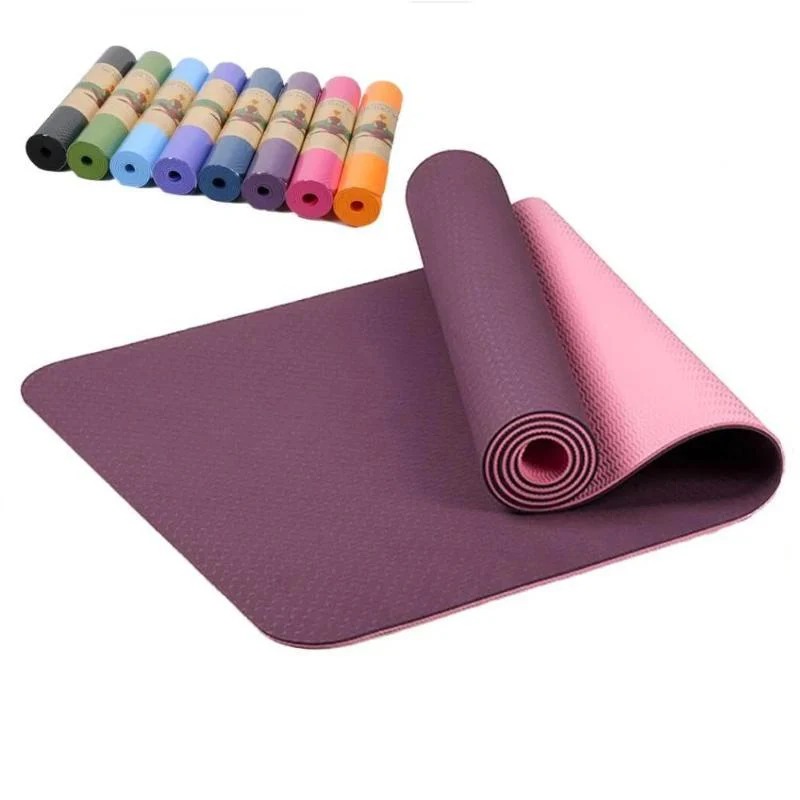What to use to clean yoga mat? Keeping your yoga mat clean is essential for a great practice and overall cleanliness. A dirty yoga mat not only detracts from your experience, but it can also harbor bacteria and odors that can negatively impact your health. Fortunately, there are several different methods and products that you can use to effectively clean your yoga mat and keep it in great condition.
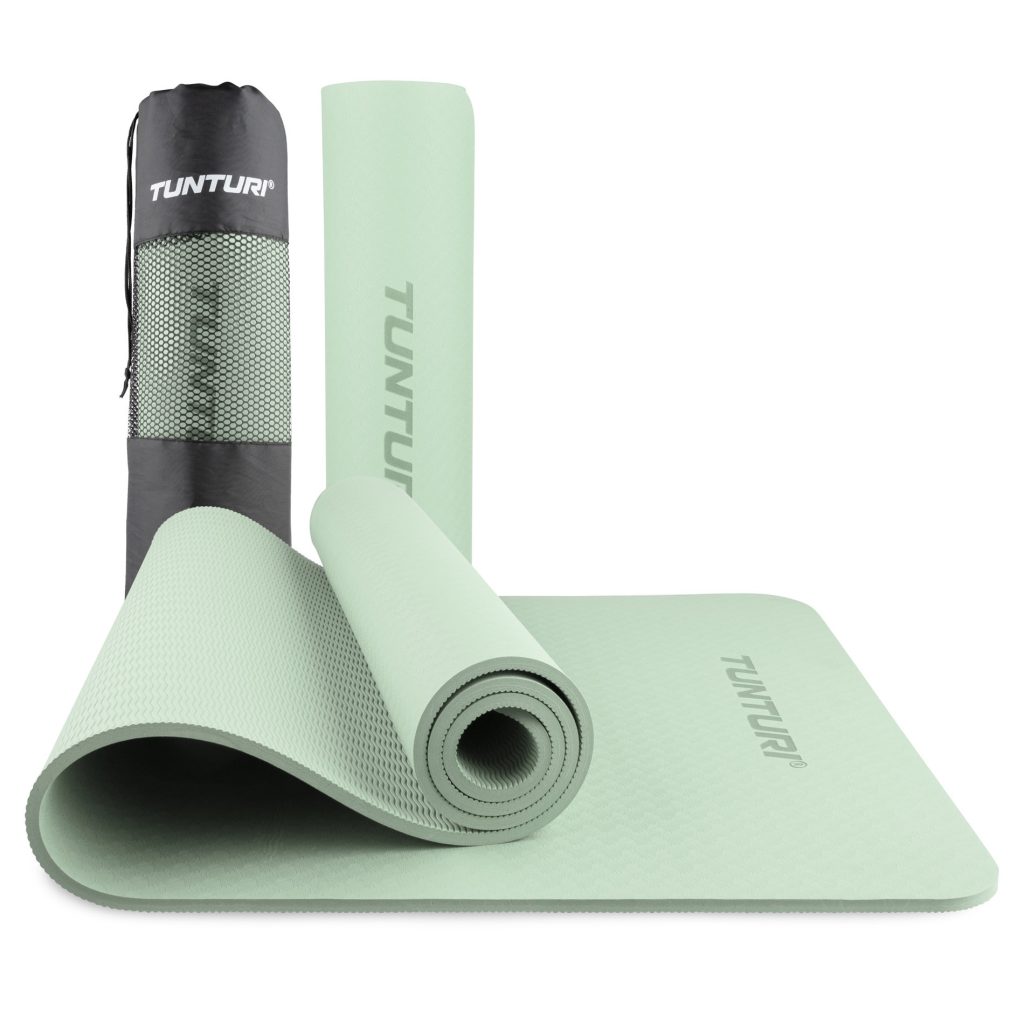
In this guide, we will explore the best ways to clean your yoga mat, from natural homemade solutions to commercial cleaning products. Whether you practice yoga at home or in a studio, it’s important to maintain a clean mat for your own health, as well as the wellbeing of others who may use the same mat.
Why it’s important to clean your yoga mat
Yoga mats can harbor sweat, dirt, and bacteria, especially after frequent use. This can not only cause your mat to become dirty and smelly, but it can also create an unhygienic environment for your practice. Additionally, a dirty yoga mat can lead to skin irritation and potentially cause infections if not properly cleaned.
Cleaning your yoga mat on a regular basis is essential for maintaining the overall hygiene of your yoga practice. By keeping your mat clean, you can ensure a safe and comfortable surface for your yoga sessions, as well as prevent the spread of bacteria and germs.
Natural homemade solutions for cleaning your yoga mat
-
Vinegar and water mixture
One of the most effective and natural ways to clean your yoga mat is by using a vinegar and water mixture. Simply combine equal parts of water and white vinegar in a spray bottle, and lightly spritz the solution onto your mat. Use a clean cloth to wipe down the mat, removing any dirt, sweat, and bacteria. The vinegar will help to disinfect the mat, leaving it fresh and clean.
-
Lemon and water solution
Lemon is a natural antibacterial agent and can be used to effectively clean your yoga mat. Mix the juice of one lemon with water in a spray bottle and apply it to your mat. Use a cloth to wipe down the surface, removing any grime or odor. The lemon will not only clean and disinfect your mat, but it will also leave a pleasant, citrusy scent.
Commercial cleaning products for your yoga mat
If you prefer to use a commercial cleaning product to clean your yoga mat, there are several options available on the market. Many yoga mat cleaners are specifically formulated to remove sweat, dirt, and bacteria from the surface of your mat, while also leaving behind a refreshing scent. Be sure to read the instructions on the product label before using it on your mat, and test it on a small, inconspicuous area to ensure that it does not cause any damage or discoloration.
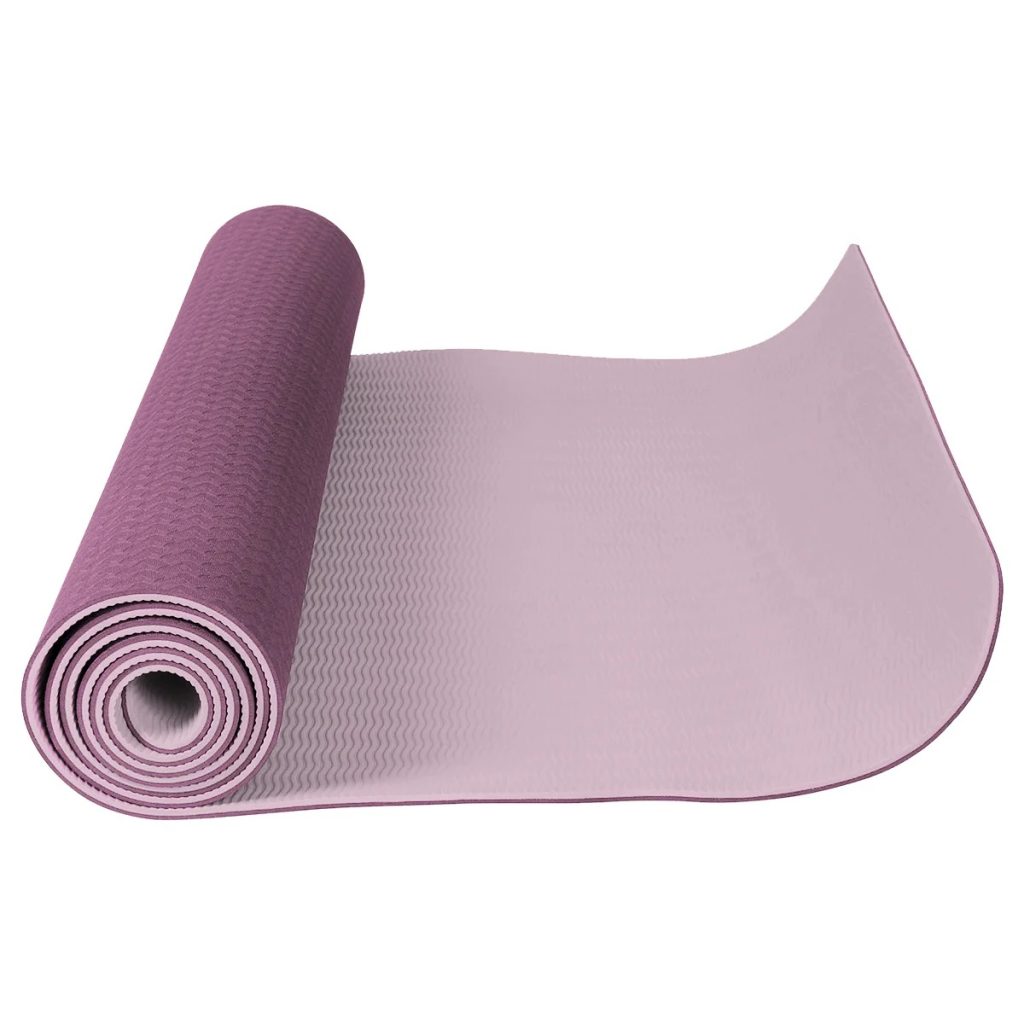
Tips for maintaining a clean yoga mat
In addition to cleaning your yoga mat on a regular basis, there are a few simple tips that can help you maintain its cleanliness and extend its lifespan.
Use a towel:
Placing a towel on your yoga mat during your practice can help to absorb sweat and prevent it from seeping into the surface of the mat. This can minimize the amount of dirt and bacteria that accumulates on the mat, making it easier to clean.
Air it out:
After each use, allow your yoga mat to air out and dry completely before rolling it up. This can help to prevent the growth of mold and mildew, as well as reduce odors.
Store it properly:
When not in use, store your yoga mat in a cool, dry place away from direct sunlight. Avoid leaving it in a hot car or in a damp environment, as this can promote the growth of bacteria and cause the mat to deteriorate.
By following these tips and maintaining a regular cleaning routine, you can ensure that your yoga mat remains clean, hygienic, and in great condition for your practice. Whether you prefer natural homemade solutions or commercial cleaning products, there are plenty of options available to help you keep your mat fresh and ready for your next yoga session.
How to use the yoga mat
Yoga is a practice that has been around for centuries and has gained popularity around the world for its numerous physical and mental health benefits. For many practitioners, having a yoga mat is an essential part of their practice. It provides comfort, support, and stability during different yoga poses and exercises.
Choosing the Right Yoga Mat
When selecting a yoga mat, it’s important to consider various factors such as thickness, material, and texture. The thickness of a yoga mat can vary from 1/16 inch to 1/4 inch, with thicker mats providing more cushioning and support for the joints. However, thicker mats may be less stable during balance poses. The material of the mat is also crucial, with options including PVC, rubber, or eco-friendly materials like natural rubber or cork. Furthermore, the texture of the mat can affect your grip during different poses. Ultimately, the right yoga mat will depend on your personal preferences, practice style, and any specific physical needs.
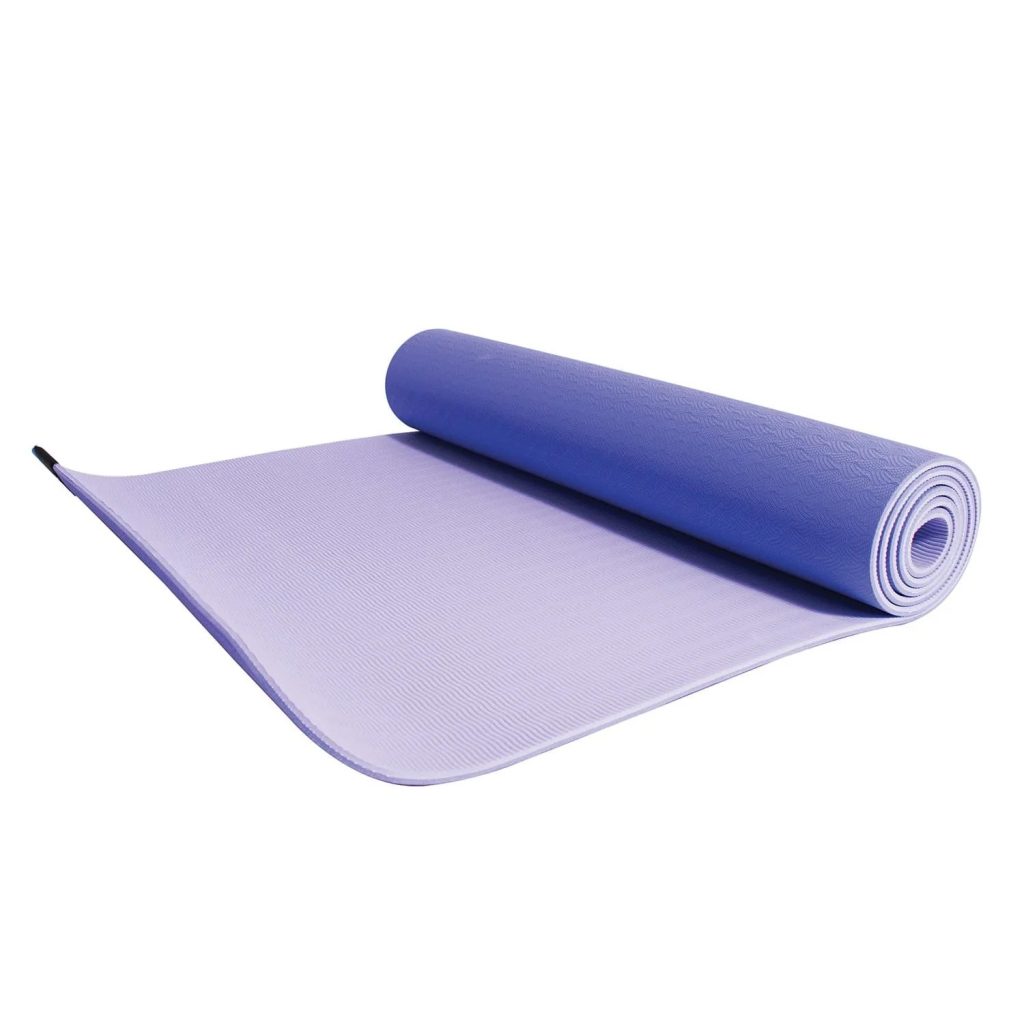
Cleaning and Maintaining Your Yoga Mat
Regular maintenance and cleaning of your yoga mat are essential to ensure its longevity and hygiene. After each use, you can wipe down the mat with a gentle cleaner or a solution of water and mild soap. For a more thorough cleaning, you can either hand wash the mat with a soft brush or machine wash it on a gentle cycle. It’s important to check the manufacturer’s instructions for specific cleaning guidelines, as some mats may be more sensitive to certain cleaning products. Additionally, allowing the mat to air dry completely before rolling it up is crucial in preventing the growth of mold and bacteria.
Using Your Yoga Mat
Now that you have chosen and maintained your yoga mat, it’s time to dive into its actual usage during your yoga practice. Here are some essential tips for using your yoga mat effectively:
- Unroll the Mat with Care: When unrolling your yoga mat, ensure that it is lying flat on a smooth, clean surface. Avoid dragging or pulling the mat, as this can cause it to stretch or tear.
- Position Yourself in the Center: When beginning your practice, position yourself in the center of the mat to ensure that you have adequate space for all poses and movements. This also helps in maintaining balance and stability.
- Secure Your Grip: Whether you’re practicing on a bare floor or carpeted surface, a yoga mat provides added traction and stability. Make sure to position your hands and feet firmly on the mat to prevent slipping, especially during more challenging poses.
- Focus on Alignment: The lines and markers on some yoga mats can help you align your body and maintain accurate form during different postures. Use these markers as a guide to improve your alignment and balance.
- Comfort and Support: A good yoga mat should provide enough cushioning and support for your body, especially during seated and kneeling postures. This makes your practice more comfortable and reduces the risk of injuries.
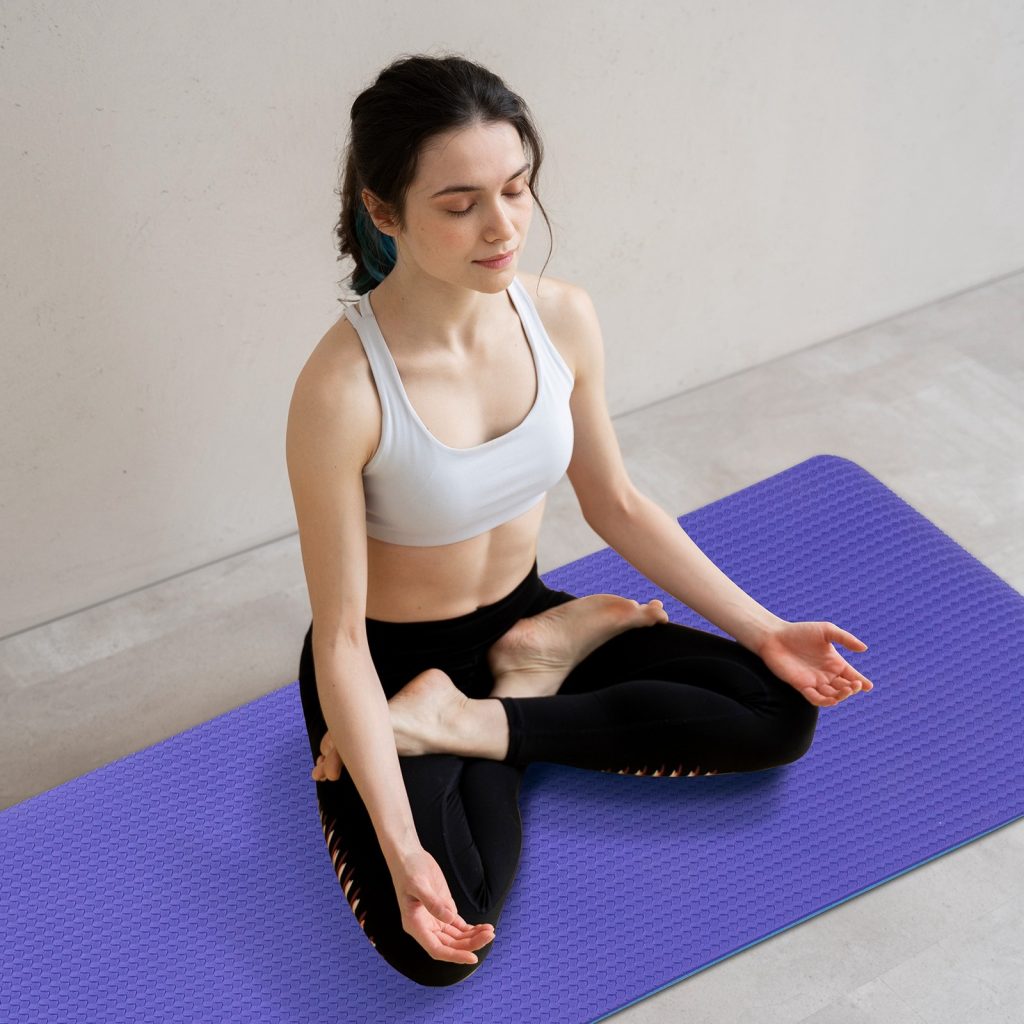
In conclusion
Cleaning your yoga mat is an essential part of maintaining a healthy and hygienic yoga practice. From natural homemade solutions like vinegar and lemon to commercial cleaning products, there are several effective ways to clean your mat and keep it in great condition. By regularly cleaning and maintaining your yoga mat, you can create a safe and comfortable surface for your practice, as well as prevent the spread of bacteria and odors. With a clean mat, you can enjoy a more enjoyable and beneficial yoga experience.
